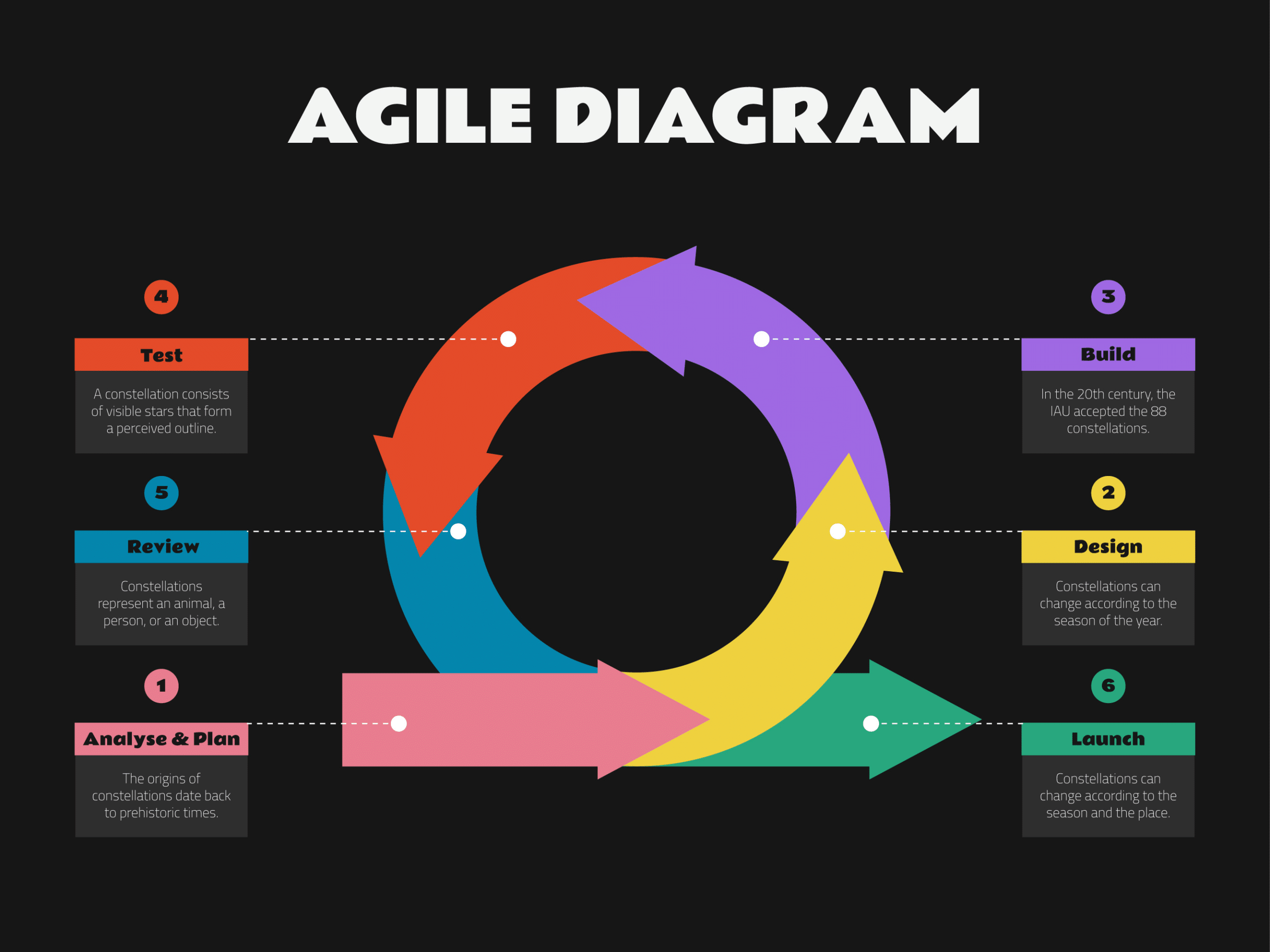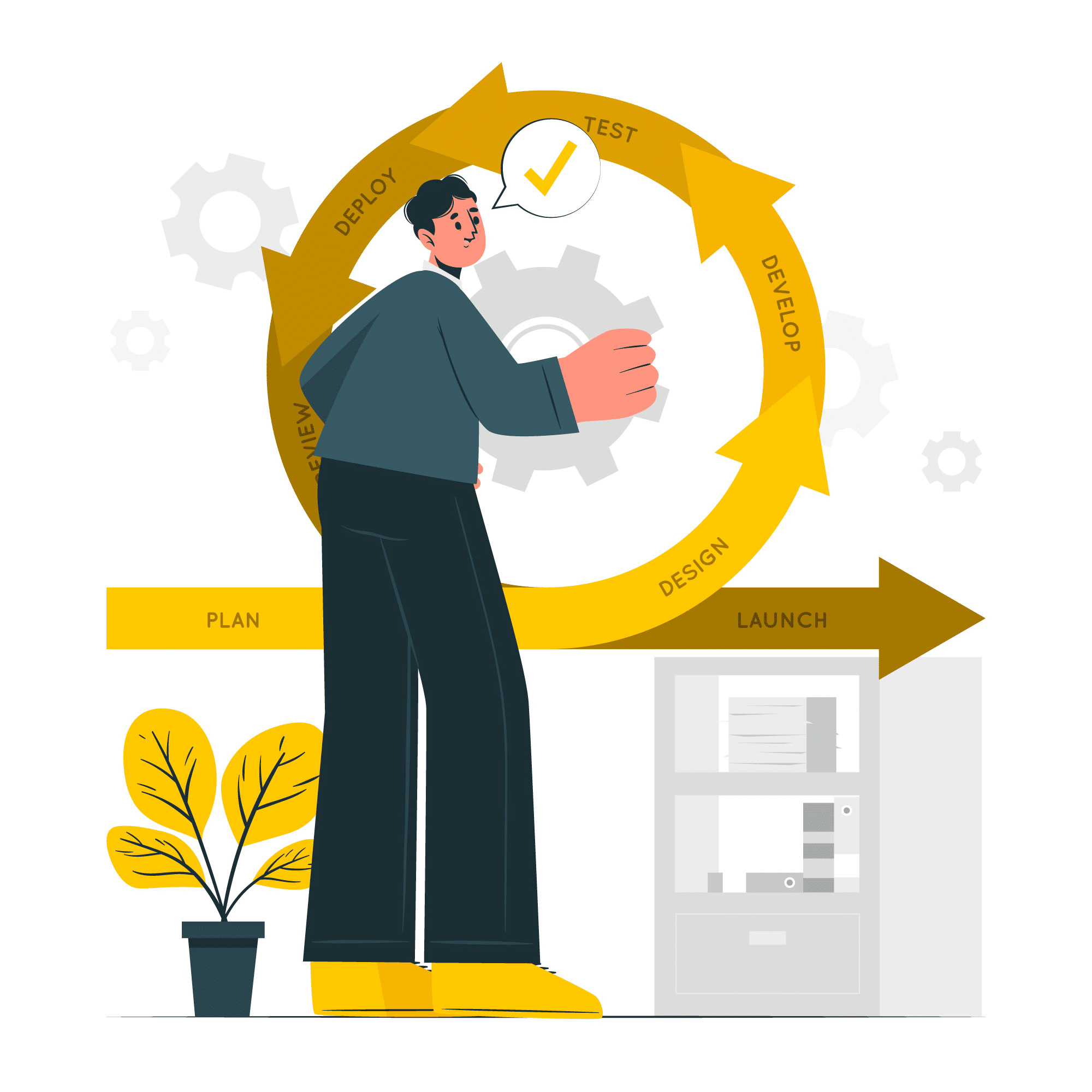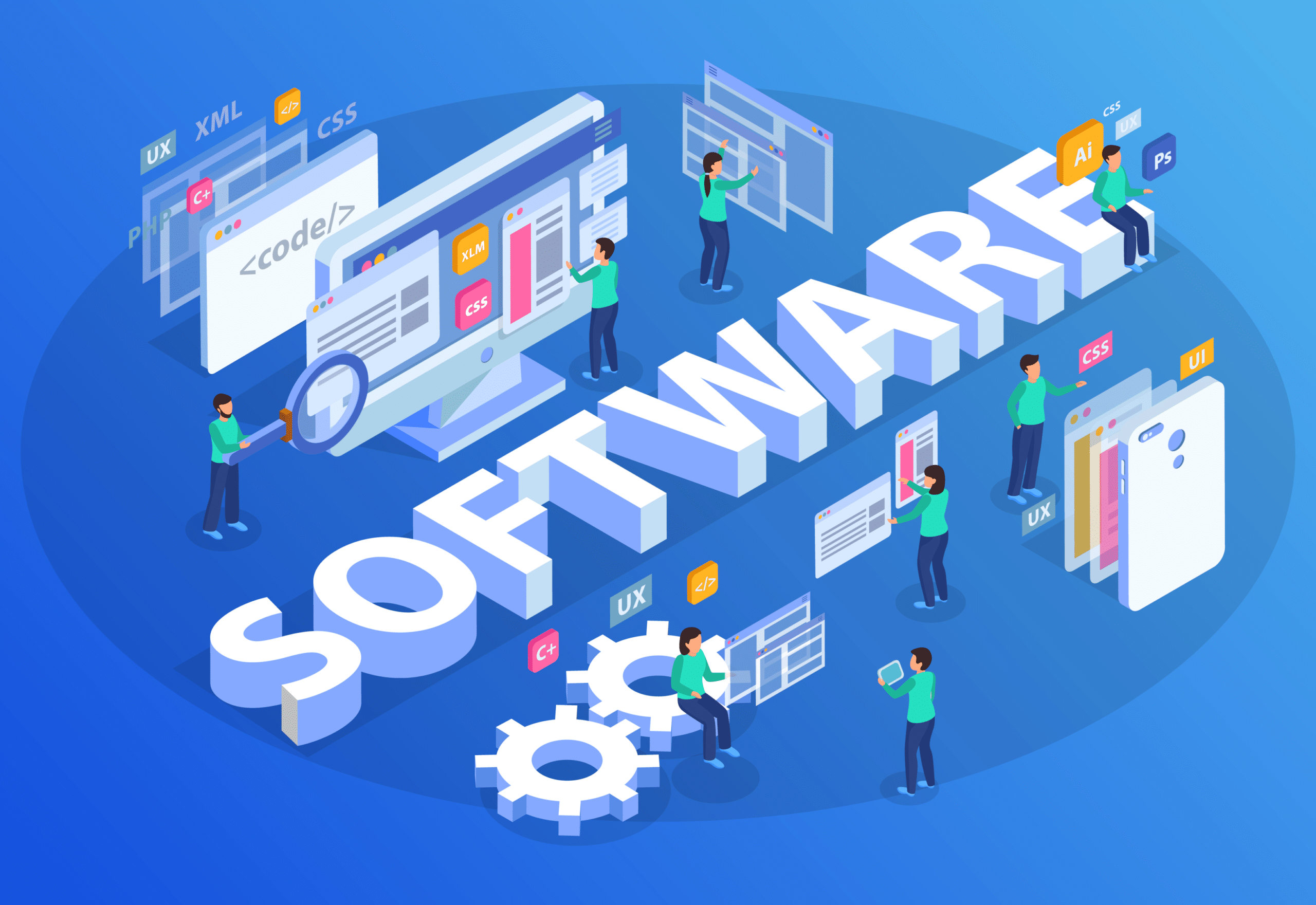In the fast-paced world of software development, the keyword “Agile Software Development” has become a beacon for efficiency, collaboration, and adaptability. In this comprehensive article, we will explore the role of a Business Analyst in the agile environment, where dynamic methodologies redefine how projects are executed.

Definition of Agile Software Development
Agile Software Development is a collaborative and iterative approach to software development that prioritizes customer satisfaction, flexibility, and continuous delivery of valuable software. It emphasizes adaptive planning, cross-functional teams, and frequent customer feedback to respond effectively to changing requirements and deliver high-quality products.
Agile methodologies, like Scrum and Kanban, promote incremental development and emphasize working software over comprehensive documentation. By embracing Agile principles, teams can achieve faster development cycles, improved communication, and enhanced responsiveness to customer needs, ultimately leading to successful and customer-centric software projects.
Benefits of Agile Software Development
Agile Software Development has revolutionized the way software projects are executed, bringing numerous benefits that contribute to successful and efficient development processes. In this article, we will explore the key advantages of adopting Agile methodologies, highlighting how they promote collaboration, adaptability, and customer satisfaction.

Strengthened Collaboration
One of the foremost advantages of Agile Project Management lies in its emphasis on fostering collaboration among team members. Agile frameworks, like Scrum and Kanban, champion face-to-face communication and continuous interaction. Such a conducive environment nurtures a tight-knit team bond, promoting knowledge sharing and driving overall productivity. Through regular stand-up meetings, retrospectives, and daily collaboration, Agile ensures everyone is harmoniously aligned, leading to enhanced decision-making and problem-solving capabilities.
Accelerated Delivery of Working Software
The iterative and incremental approach of Agile translates into expedited delivery of working software. Instead of waiting for the project’s entirety to conclude, Agile software development delivers functional increments at the end of each iteration (sprint). This rapid delivery enables the early release of valuable software features, allowing stakeholders to provide prompt feedback and make necessary adjustments swiftly. Such accelerated deployment also paves the way for a quicker time-to-market, thereby securing a competitive edge.
Adaptability to Changing Requirements
In traditional software development methodologies, late changes to requirements can prove cumbersome and disruptive. However, Agile project management wholeheartedly embraces changes throughout the development process. Agile software development practitioners possess the agility to respond nimbly to shifting business needs, market trends, or customer preferences. This adaptability and flexibility ensure the end product stays in perfect alignment with the most current requirements, thereby enhancing its relevance and value to customers.
Continuous Customer Feedback
At the heart of Agile’s software development approach lies the profound significance it accords to engaging customers and incorporating their feedback. By consistently interacting with customers and end-users, Agile development teams gain invaluable insights into their requirements and desires. This iterative feedback loop allows the creation of software that impeccably caters to customer expectations. Early identification of potential concerns or enhancements further enriches the development process, culminating in a superior end product tailored precisely to customer preferences.

Enhanced Transparency and Visibility
Agile practices serve as powerful catalysts for increased transparency and visibility throughout the project lifecycle. Daily stand-up meetings and regular progress updates effectively disseminate the project’s status, challenges, and accomplishments, leaving no room for ambiguity. This heightened transparency not only fosters accountability but also cultivates a culture of trust both within the team and among stakeholders.
Risk Mitigation
Inherently, Agile’s incremental and iterative approach yields a significant reduction in project risk. By breaking down the project into smaller, more manageable increments, teams can swiftly identify and address potential issues early on. Frequent testing, continuous integration, and incremental development empower teams to detect and rectify defects promptly, averting the accumulation of setbacks later in the project’s lifecycle.
Improved Product Quality
Unwavering dedication to delivering value to end users forms the crux of Agile methodology. By prioritizing continuous testing and integration, Agile ensures comprehensive validation of the software throughout its development journey. The iterative nature of Agile further facilitates continuous improvement, streamlining the process of incorporating feedback and refining the product’s quality with unwavering precision.
Motivated and Engaged Team
Agile software development revolves around empowering teams to self-organize and make collaborative decisions. This autonomy fosters a profound sense of ownership and responsibility, igniting intrinsic motivation within the team. The Agile principles additionally create a conducive environment for constant learning and growth, championing the nurturing of talent and supporting the team’s professional development.
Cost-Efficiency
While Agile methodology might initially appear resource-intensive, the continuous delivery of working software yields substantial cost efficiency in the long run. Swift detection and mitigation of issues prevent costly rework or late-stage changes, thereby saving resources. Moreover, Agile’s adaptive nature ensures optimal resource allocation by prioritizing high-value features, and meeting customer demands with remarkable efficacy.
Customer-Centric Development
At its core, Agile Software Development revolves around delivering unparalleled value to customers. By incorporating customers throughout the development process, Agile crafts an end product that addresses their specific needs with precision. This customer-centric approach not only elevates customer satisfaction but also engenders unwavering loyalty, forging the path to long-term success for both the agile software development team and the organization as a whole.
Popularity and Potential Challenges of Agile
The widespread adoption of Agile methodologies is fueled by its proven ability to deliver top-notch products and promote a collaborative work culture. Nevertheless, the implementation of Agile practices is not without hurdles, as it demands consistent communication, effective handling of evolving requirements, and the maintenance of team unity as key challenges.
The Role of Business Analysts in Agile Environments
In Agile development, Business Analysts play a crucial role as navigators, bridging the gap between business stakeholders and the development team. Their responsibilities extend beyond gathering requirements to facilitating dialogue, analyzing impacts, and focusing on delivering real value to end-users.
The Four Values of Agile
The Four Values of Agile Software Development are fundamental principles that guide Agile teams in their approach to Agile software development. These values, outlined in the Agile Manifesto, place emphasis on key aspects that promote effective collaboration, customer-centricity, and flexibility. Let’s explore each of the four values in detail:

Individual Interactions Over Processes and Tools
Within the Agile landscape, the paramount importance is placed on the human aspect, surpassing rigid processes and tools. Business Analysts excel in building robust relationships with team members and stakeholders, thereby nurturing an environment of effective communication and seamless collaboration.
Focus on Working Software Over Thorough Documentation
Agile methodology steadfastly prioritizes the delivery of functional software over indulging in extensive documentation. Business Analysts forge close partnerships with the team, ensuring that valuable features are brought to fruition while sidestepping the pitfalls of excessive documentation.
Collaboration Instead of Contract Negotiations
In the Agile realm, Business Analysts embark on a journey of collaboration with stakeholders to deeply comprehend their needs, steering clear of fixed contracts. This spirit of partnership amplifies flexibility and responsiveness, equipping the team to adeptly respond to evolving requirements.
Emphasis on Responding to Change
In the Agile environment, Business Analysts thrive on adaptability and embrace change as a way of life. The continuous gathering of feedback enables the team to flexibly adjust and optimize their efforts, ultimately paving the way for superior outcomes.
The 12 Principles of Agile
The 12 Principles of Agile Software Development, derived from the Agile Manifesto, provide a set of guidelines that steer agile teams toward effective project execution, customer-centricity, and continuous improvement. These principles emphasize collaboration, adaptability, and customer value. Let’s explore each of the 12 principles in detail:

Satisfying Customers Through Early and Continuous Delivery of Valuable Work
Business Analysts actively involve customers throughout the development process to ensure their needs are met, leading to a valuable end product.
Breaking Big Work Down into Smaller Tasks
Business Analysts help break down complex projects into manageable tasks, ensuring a clear understanding and efficient execution.
Recognition of Self-Organized Teams for Best Work
Agile Business Analysts empower self-organized teams to make decisions, fostering a sense of ownership and accountability.
Providing a Supportive Environment for Motivated Individuals
Business Analysts create an environment that encourages collaboration, innovation, and continuous improvement among team members.
Creating Processes That Promote Sustainable Efforts
Business Analysts facilitate the creation of sustainable processes, preventing burnout and ensuring a steady pace of work.
Maintaining a Constant Pace for Completed Work
Agile Business Analysts help teams maintain a consistent flow of work to avoid bottlenecks and keep productivity steady.
Welcoming Changing Requirements
Business Analysts embrace changes in requirements as a way to improve the final product and meet evolving user needs.
Daily Collaboration Between the Project Team and Business Owners
Business Analysts ensure continuous communication between the team and stakeholders, aligning development efforts with business objectives.

Regular Reflection and Improvement of Team Effectiveness
Business Analysts encourage retrospectives and continuous improvement, fostering a culture of learning and growth.
Measuring Progress by the Amount of Completed Work
Business Analysts help teams track progress by focusing on the delivery of completed features, providing a tangible measure of success.
Continually Seeking Excellence
Agile Business Analysts strive for excellence by encouraging best practices and promoting a culture of high-quality deliverables.
Harnessing Change for a Competitive Advantage
Business Analysts leverage change to adapt quickly and gain a competitive edge in the market.
The Agile Software Development Cycle
Agile projects follow a cyclical development process that includes concept, inception, iteration/construction, release, production, and retirement phases. Each step is essential in delivering a successful product.
Types of Agile Methodologies
Agile methodologies encompass a range of frameworks and practices, each tailored to suit different project requirements and team dynamics. These methodologies prioritize flexibility, customer collaboration, and iterative development. Here are some of the most prominent types of Agile methodologies:

Scrum
Scrum is one of the most widely used Agile frameworks. It emphasizes iterative development through fixed-length timeboxed iterations called “sprints.” During each sprint, cross-functional teams collaborate to deliver a potentially shippable product increment. Scrum relies on a product backlog managed by the Product Owner, who sets priorities for development.
Lean Agile Software Development
Inspired by lean manufacturing principles, Lean Software Development focuses on delivering value to customers efficiently. It seeks to eliminate waste, optimize flow, and improve overall team efficiency. Lean promotes continuous feedback and continuous improvement, ensuring that the development process is responsive to changing customer needs.
Extreme Programming (XP)
Extreme Programming, or XP, emphasizes engineering practices that lead to high-quality software. XP teams practice test-driven development, pair programming, and continuous integration to ensure a robust and maintainable codebase. XP also promotes regular releases, frequent customer feedback, and a focus on simplicity.
Crystal
Crystal is a family of Agile methodologies tailored to specific project characteristics. The Crystal approach is flexible and adaptable, taking into account team size, criticality, and priorities. Crystal methodologies promote regular delivery, collaboration, and close interaction between stakeholders.
Kanban
Kanban is a visual workflow management system that emphasizes continuous delivery. Teams use Kanban boards to visualize work items and their progress through various stages. Limiting work in progress (WIP) helps teams maintain a steady flow of work and identify bottlenecks. Kanban promotes a pull-based approach, where new work is pulled only when there is capacity to handle it.

Dynamic Systems Development Method (DSDM)
DSDM is an industry framework for rapid software delivery. It provides a structured approach to Agile development, incorporating principles such as timeboxing, MoSCoW prioritization, and frequent delivery. DSDM also emphasizes strong collaboration between business stakeholders and development teams.
Feature-Driven Development (FDD)
Feature-driven Development is a model-driven Agile approach. It focuses on building software incrementally based on features identified and designed by the team. FDD breaks down development into short iterations, each centered around developing specific features. FDD promotes a disciplined and incremental approach to development.
Key Skills for a Successful Business Analyst in Agile
A successful Business Analyst (BA) in an Agile environment requires a unique set of skills that go beyond traditional BA capabilities. Agile demands adaptability, collaboration, and customer-centricity. Here are the key skills that contribute to the success of a Business Analyst in an Agile setting:

Analytical Skills: Agile Business Analysts (BAs) demonstrate formidable analytical abilities to comprehend intricate business processes, elicit requirements, and break them down into actionable user stories.
Communication Skills: Effective communication stands as a cornerstone in the Agile landscape. BAs deftly navigate diverse stakeholders, developers, and team members, ensuring shared understanding and alignment throughout the project.
Business Knowledge: BAs embody an in-depth understanding of the domain they operate in. This profound expertise empowers them to provide invaluable insights, ask pertinent questions, and ensure that the delivered product aligns seamlessly with business needs.
Technical Skills: Though not all BAs need to be programmers, possessing a foundational grasp of technical concepts and development processes proves advantageous for fostering effective collaboration with the development team.
Problem-Solving Skills: Agile BAs thrive in rapidly changing environments, encountering various challenges along the way. The ability to think critically and conceive innovative solutions is integral to surmounting obstacles.
Adaptability: Agile projects often necessitate swift adaptability to frequent changes. BAs must display flexibility, gracefully adjusting their approaches to accommodate evolving requirements.
Collaboration: At the core of Agile lies a thriving culture of collaboration. BAs seamlessly integrate with stakeholders, developers, testers, and other team members, ensuring a shared vision and the seamless execution of tasks.
Attention to Detail: Agile BAs exemplify meticulousness, leaving no stone unturned when scrutinizing requirements, acceptance criteria, and user stories to ensure precision and completeness.
Empathy: Demonstrating empathy, BAs deeply comprehend the perspectives of stakeholders and end-users, enabling them to elicit and document requirements that genuinely address their needs.
Facilitation Skills: BAs master the art of facilitating meetings, workshops, and ceremonies. Their adept facilitation skills yield smooth interactions and drive effective outcomes.
Negotiation Skills: Agile BAs deftly navigate the complexities of competing priorities. Their prowess in negotiation helps them discover win-win solutions and strike a harmonious balance between conflicting interests.
Customer Focus: At the heart of Agile BAs’ endeavors lies a steadfast dedication to customer-centricity. They place the customer at the core of the development process, ensuring that requirements harmonize with customer value and satisfaction.
Time Management: Agile projects abide by tight timelines, and effective time management empowers BAs to prioritize tasks and deliver value within the constraints of time.
Continuous Learning: Agile methodologies evolve incessantly, propelling BAs to remain abreast of the latest trends, practices, and tools, enhancing their overall effectiveness.
Conflict Resolution: Collaborative environments may witness conflicts arise, and BAs exhibit the skill to resolve conflicts constructively, preserving a positive team dynamic.
By assimilating these pivotal skills, a Business Analyst thrives in Agile environments, contributes to project triumph, and delivers software that resonates profoundly with customer needs.

Conclusion
Agile Software Development has revolutionized the way projects are executed, and Business Analysts play a vital role in this dynamic landscape. With their adaptability and collaborative skills, Agile Business Analysts navigate the seas of development, delivering value to stakeholders and ensuring project success.
As Agile methodologies continue to evolve, Business Analysts must sharpen their expertise, staying at the forefront of innovation and collaboration. The journey of Agile Software Development, along with the critical role of Business Analysts, promises a future of continuous improvement and exceptional product delivery.
FAQs
What is the role of Business Analyst during development?
The role of a Business Analyst during development is to bridge the gap between business stakeholders and the development team. They gather and analyze requirements, facilitate communication, and ensure the final product aligns with customer needs.
Are business analysts part of the agile team?
Yes, business analysts are an integral part of the agile team. They collaborate closely with team members and stakeholders, providing valuable insights into customer requirements and helping to prioritize work for maximum efficiency.
What are the roles and responsibilities of a Business Analyst?
The roles and responsibilities of a Business Analyst include gathering and documenting requirements, analyzing business processes, facilitating meetings, supporting the product owner, ensuring project alignment with business goals, and fostering effective communication among stakeholders.
Why agile teams have business analysts?
Agile teams have business analysts to ensure a customer-centric approach, facilitate collaboration, and provide a deeper understanding of business needs. Business analysts play a crucial role in helping the team adapt to changing requirements and deliver valuable features throughout the development process.



